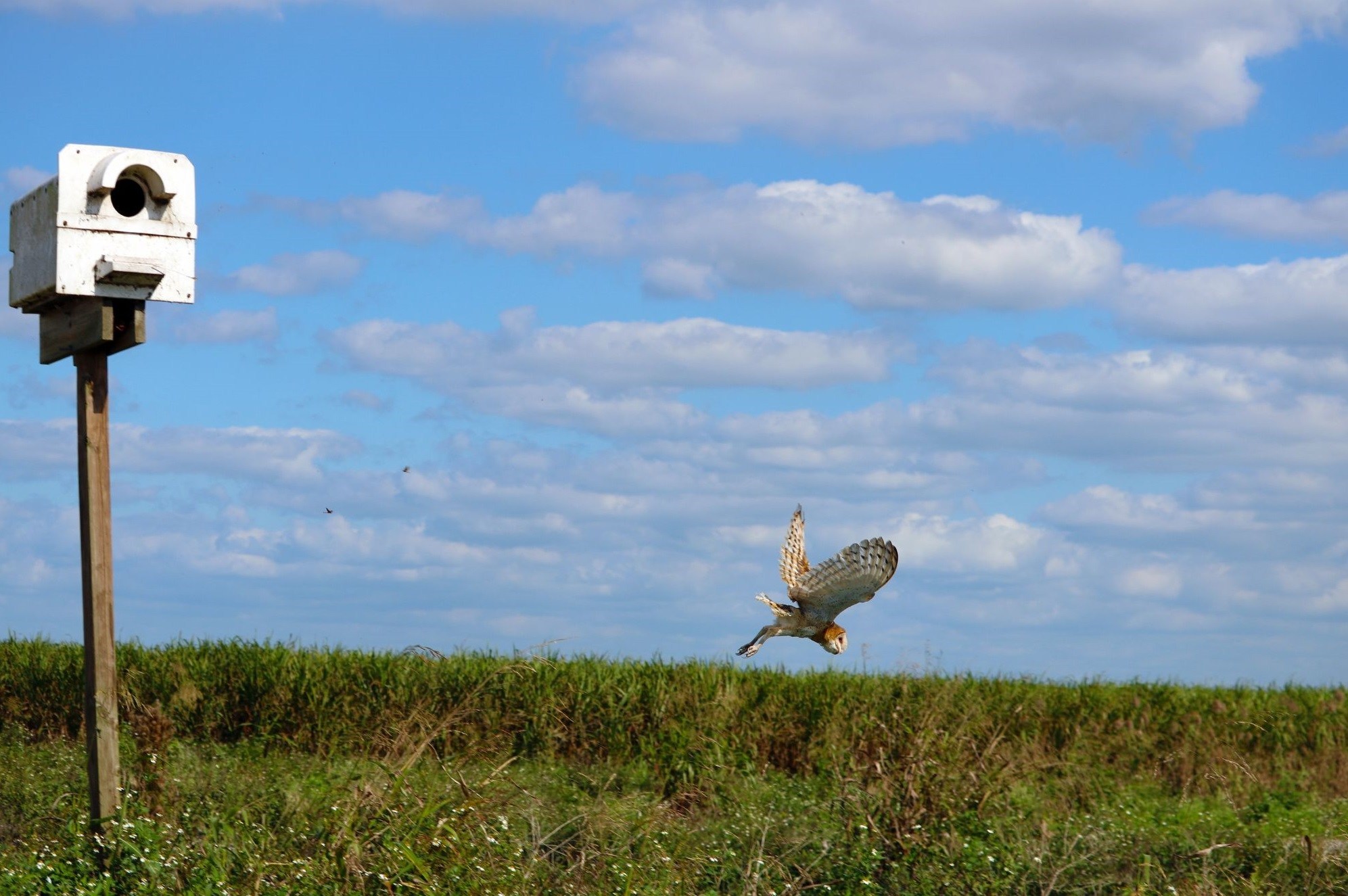Aug 5, 2022
Florida Crystals uses barn owls for organic farm protection
Florida Crystals Corporation is more than doubling the size of its barn owl box network to naturally protect its South Florida farms and promote biodiversity.
Florida Crystals’ barn owl box network on its South Florida farms provides habitat for more than 1,250 barn owls. The barn owl program, in which sturdy nesting boxes are constructed on 10-foot platforms to provide habitat for native barn owls, is an innovative example of Florida Crystals’ regenerative farming practices that are helping in its mission to promote biodiversity and reduce synthetic chemicals on its farms in the Everglades Agricultural Area (EAA). Florida Crystals is expanding the network from 850 nesting boxes to 2,035.

“Barn owls naturally migrate to our farming area each year from September to April,” said Diego Luzuriaga, Florida Crystals’ Vice President of Research and Development. “We are happy to welcome them. We give them a safe place to live, and they provide us with natural, biological pest control. It’s an ideal partnership.”
Florida Crystals was an early adopter of the barn owl program. The company partnered with University of Florida researcher Dr. Richard Raid in 1994 and provided his first grant and farmland to establish the barn owl program in the EAA. Wooden boxes were constructed, which attracted barn owls to nest, who in return protected the farms from rodents that damaged the cane. The wooden boxes were effective for a time but could not withstand the weather and elements.
In 2016, Florida Crystals’ Research and Development team reinvigorated the program, replacing all of the boxes with a sturdier composite material and a modern design with a perch. The new boxes were installed first to protect Florida Crystals’ organic farm, the largest in Florida and the only organic sugarcane farm in the U.S. The improved design proved highly effective, tolerating Florida’s weather and insect pressure, and provided a safer habitat for the owls. Florida Crystals quickly expanded the new design across its 194,500 acres of farmland, which directly resulted in the elimination of rodenticide by 2020.
“This is an incredibly important program, especially for Florida Crystals, as an organic farmer,” said Luzuriaga. “Three of our regenerative agriculture priority goals are to protect our soils, upcycle our byproducts and promote biodiversity on our farms. This type of low-impact farming, where we are integrating nature into our practices, is the future of sustainable farming.”
Luzuriaga’s team conducts censuses every September and March to evaluate the barn owl population and to research trends. In March 2022, the population had risen to an incredible 1,254 birds with 98 eggs left to hatch, up from 831 owls and 134 eggs in 2021. Each box normally houses four to seven owls — two adults and up to five owlets.
As they collect the population data, the team evaluates the boxes, which are georeferenced and tagged with a unique ID number, for improvements. As a result of the most recent census, Florida Crystals is testing new pole designs to prevent boxes from leaning as well as assessing cleaning and maintenance best practices. In addition to the two full census measurements, Florida Crystals is now also assessing owl occupancy throughout the year in a smaller number of boxes to understand population dynamics.









